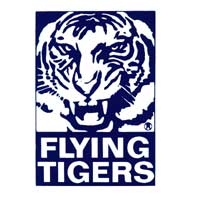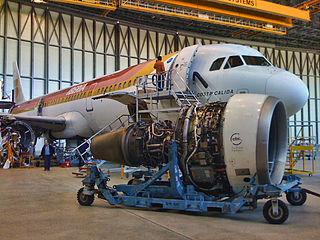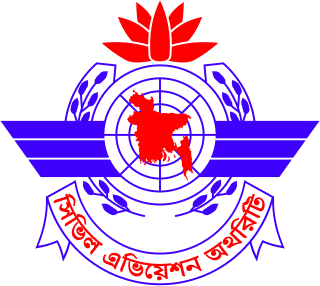The Federal Aviation Regulations (FARs) are rules prescribed by the Federal Aviation Administration (FAA) governing all aviation activities in the United States. The FARs comprise Title 14 of the Code of Federal Regulations. A wide variety of activities are regulated, such as aircraft design and maintenance, typical airline flights, pilot training activities, hot-air ballooning, lighter-than-air aircraft, man-made structure heights, obstruction lighting and marking, model rocket launches, commercial space operations, model aircraft operations, Unmanned Aircraft Systems (UAS) and kite flying. The rules are designed to promote safe aviation, protecting pilots, flight attendants, passengers and the general public from unnecessary risk.

The Lockheed Constellation ("Connie") is a propeller-driven, four-engined airliner built by Lockheed Corporation starting in 1943. The Constellation series was the first pressurized-cabin civil airliner series to go into widespread use. Its pressurized cabin enabled commercial passengers to fly well above most bad weather for the first time, thus significantly improving the general safety and ease of air travel.

A flight engineer (FE), also sometimes called an air engineer, is the member of an aircraft's flight crew who monitors and operates its complex aircraft systems. In the early era of aviation, the position was sometimes referred to as the "air mechanic". Flight engineers can still be found on some larger fixed-wing airplanes and helicopters. A similar crew position exists on some spacecraft. In most modern aircraft, their complex systems are both monitored and adjusted by electronic microprocessors and computers, resulting in the elimination of the flight engineer's position.

Flying Tiger Line, also known as Flying Tigers, was the first scheduled cargo airline in the United States and a major military charter operator during the Cold War era for both cargo and personnel. The airline was bought by Federal Express in 1988.

Nationwide Airlines was an airline based in Lanseria, South Africa. It operated scheduled domestic and international services. Its main base was OR Tambo International Airport, Johannesburg. On 29 April 2008, the airline ended operations.

Bournemouth Airport is an international airport located 3.5 NM north-northeast of Bournemouth, in southern England. The site opened as RAF Hurn in 1941, but was transferred to civil control in 1944. For a short period Hurn served as London's international airport, until the opening of facilities at Heathrow. Commercial services resumed in the late 1950s, with Palmair commencing flights to Palma, Majorca in October 1958.

The Beechcraft 1900 is a twin-engine turboprop regional airliner manufactured by Beechcraft. It is also used as a freight aircraft and corporate transport, and by several governmental and military organizations. With customers favoring larger regional jets, Raytheon ended production in October 2002.
British United Air Ferries (BUAF) was a wholly private, British independent car and passenger ferry airline based in the United Kingdom during the 1960s. It specialised in cross-Channel ferry flights carrying cars and their owners between its numerous bases in Southern England, the Channel Islands and Continental Europe. All-passenger and all-cargo flights were operated as well. Following several identity and ownership changes, it went out of business in 2001.

Aircraft maintenance is the performance of tasks required to ensure the continuing airworthiness of an aircraft or aircraft part, including overhaul, inspection, replacement, defect rectification, and the embodiment of modifications, compliance with airworthiness directives and repair.
Dan Air Engineering Limited was the maintenance arm of Dan Air Services Limited, itself a subsidiary of Davies and Newman, one of Britain's foremost wholly privately owned, independent ship broking and airline companies during the 1970s and 80s.

Adam Air Flight 172 was a scheduled domestic passenger flight from Soekarno–Hatta International Airport to Juanda Airport, Surabaya. On 21 February 2007, the Boeing 737-300 operating the flight made a hard landing at Surabaya and suffered fuselage cracking in the middle of the passenger section. All six of Adam Air's remaining 737s were immediately grounded, and five of them were back in regular service later that year. This incident caused further concerns regarding the safety of flights operated by Adam Air, which had received much criticism after the 1 January 2007 crash of Flight 574.

Civil Aviation Authority of Bangladesh (CAAB) functions as the regulatory body for all aviation related activities in Bangladesh. It is the civil aviation authority operating under the Ministry of Civil Aviation & Tourism. All nine operational airports are operated by the CAAB. A member of International Civil Aviation Organization, it has signed bilateral air transport agreement with 52 states. It is headquartered in Kurmitola, Dhaka.

Channel Airways was a private airline formed in the United Kingdom in 1946 as East Anglian Flying Services.

Lufthansa Technik AG provides worldwide maintenance, repair, and overhaul (MRO) services for aircraft, engines, and components. It is a subsidiary of the Lufthansa Group.

Civil aviation is one of two major categories of flying, representing all non-military and non-state aviation, both private and commercial. Most countries in the world are members of the International Civil Aviation Organization and work together to establish common Standards and Recommended Practices for civil aviation through that agency.
Skyways Limited was an early post-World War II British airline formed in 1946 that soon became well-established as the biggest operator of non-scheduled air services in Europe.

Southwest Airlines Flight 812 was a Boeing 737-300 passenger jet that on April 1, 2011, suffered rapid depressurization while cruising at 34,000 ft (10,000 m) near Yuma, Arizona, leading to an emergency landing at Yuma International Airport. Two of the 123 people on board suffered minor injuries. The aircraft was operating Southwest Airlines' domestic scheduled service from Phoenix, Arizona, to Sacramento, California.

Delta Air Lines Flight 1080 was a scheduled flight from San Diego, California to Atlanta, Georgia, notable for the incident that occurred on April 12, 1977 during the San Diego to Los Angeles leg of the flight. Unknown to the crew, the Lockheed L-1011's left elevator had become stuck in a fully upwards position. This led to the aircraft pitching up aggressively and causing the aircraft to lose speed and nearly stall. The pitching force, unable to be overcome by fully pushing the control column down, was counteracted by reducing the thrust on the L-1011's wing engines but not the tail engine. The differential thrust, along with moving all the passengers as far forwards as possible in the cabin, pitched down the nose of the airliner and allowed the pilots to land the aircraft.
Western Airways was an airline based in Weston-super-Mare, Somerset, England between 1932 and 1978. Before World War II, for a short period, it was the world's busiest airline. It survived WWII by using its aircraft engineering expertise.

In commercial aviation, an outstation refers to an airport that is served by an air carrier but is not a hub, a focus city, nor a crew or maintenance base in that operator's network. Outstations often, but not necessarily, take the form of regional airports located in exurban or rural communities which handle lower passenger volumes and less-frequent service than hubs. For these reasons, outstations may lack passenger amenities and services which comprise an airline's typical customer experience standards. When an outstation is served by a hub-and-spoke style airline, it is common for its flights to depart early in the morning and arrive late at night due to scheduling patterns directing aircraft to remain-over-night (RON) for maximum fleet utilization.















